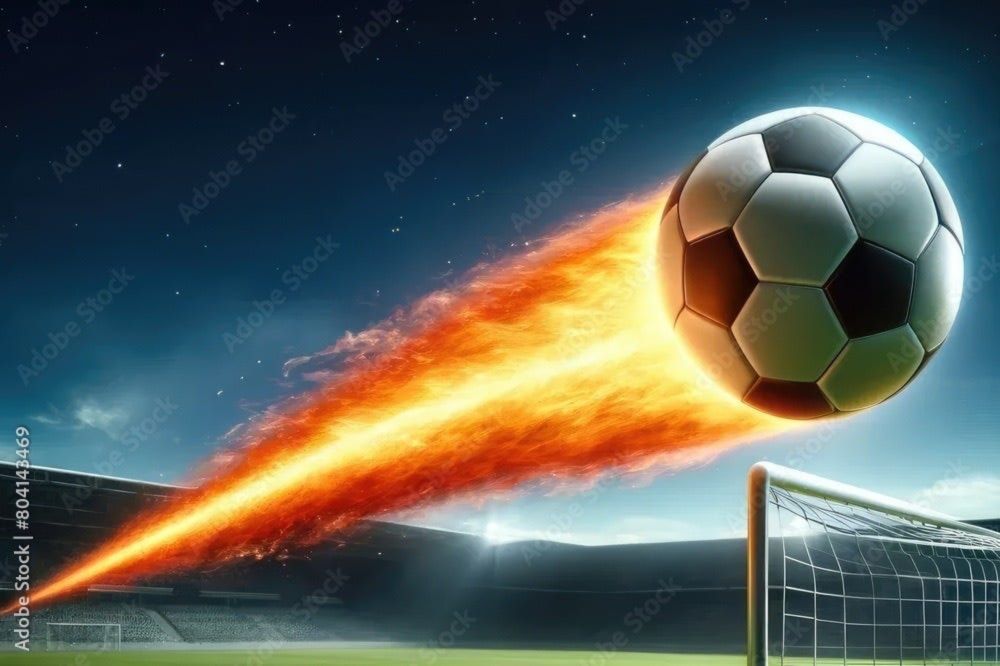
I would stop, but I have to put in a good word for NASA and how it selects and funds science. I'm starting to think maybe Avi Loeb doesn't know what he's talking about?
medium.com/@steve.desch...
@astrodupes.bsky.social
Very little astro, mostly dupes.

I would stop, but I have to put in a good word for NASA and how it selects and funds science. I'm starting to think maybe Avi Loeb doesn't know what he's talking about?
medium.com/@steve.desch...
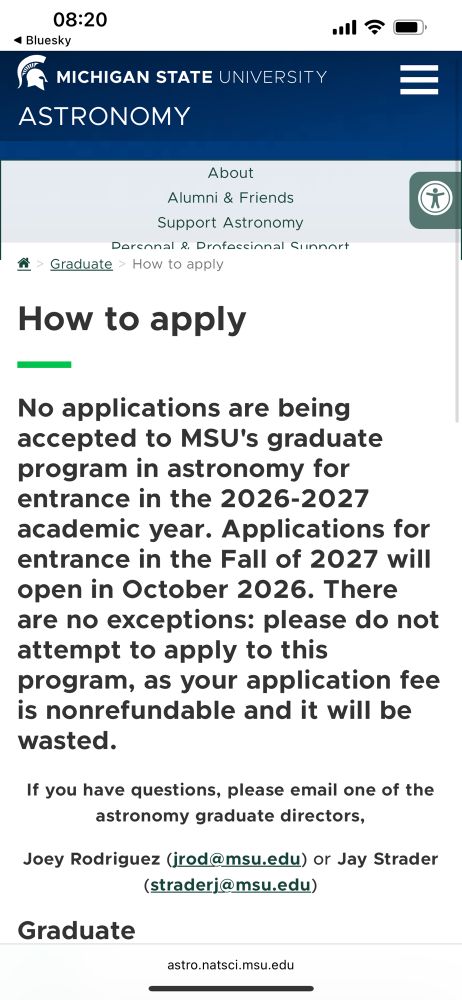
Text detailing how MSU isn’t accepting grad applications for astronomy on their website
Sign of the times- Michigan State, one of the biggest astronomy programs in the USA, is not accepting ANY applications for its graduate program this year 😖
🔭🧪🎢
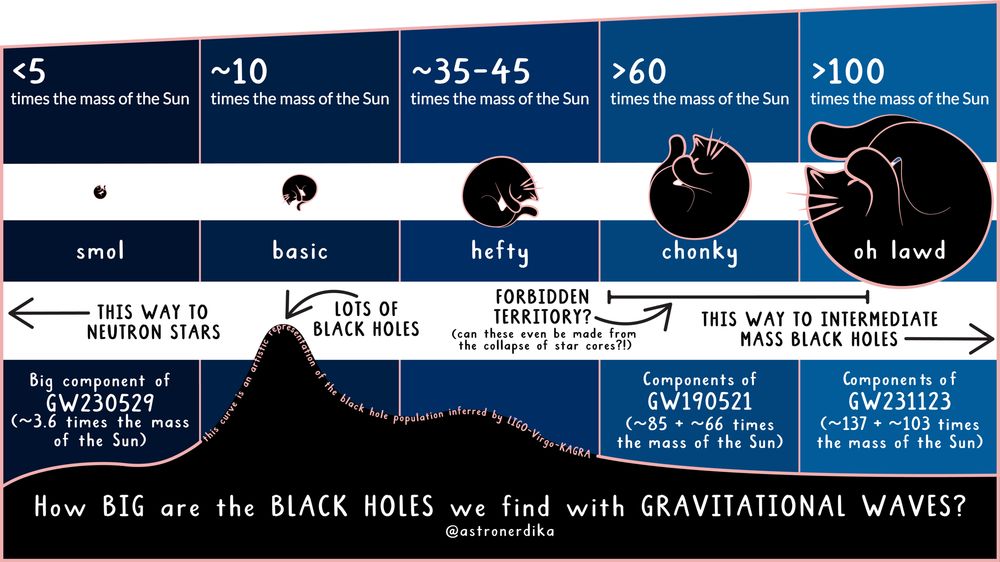
An infographic titled "How BIG are the BLACK HOLES we find with GRAVITATIONAL WAVES?" by @astronerdika. The graphic displays a range of black hole masses detected via gravitational waves, categorized by their size in solar masses (mass of the Sun) and represented with playful cat-like black hole illustrations. The categories from left to right are: 1. "<5 times the mass of the Sun" - Labeled "smol" - Very small black hole illustration represented by a curled up black cat - Arrow pointing left: "THIS WAY TO NEUTRON STARS" - Example: "Big component of GW230529 (~3.6 times the mass of the Sun)" 2. "~10 times the mass of the Sun" - Labeled "basic" - Slightly larger black hole cat illustration - Caption: "LOTS OF BLACK HOLES" 3. "~35–45 times the mass of the Sun" - Labeled "hefty" - Bigger black hole cat illustration - Continues the idea of a populated range 4. ">60 times the mass of the Sun" - Labeled "chonky" - Large black hole cat illustration - Caption: "FORBIDDEN TERRITORY? (can these even be made from the collapse of star cores?!)" - Example: "Components of GW190521 (~85 + ~66 times the mass of the Sun)" 5. ">100 times the mass of the Sun" - Labeled "oh lawd" - Very large, curled-up black hole cat illustration - Arrow pointing right: "THIS WAY TO INTERMEDIATE MASS BLACK HOLES" - Example: "Components of GW231123 (~137 + ~103 times the mass of the Sun)" Below the categories is a stylized black curve representing the inferred population of black holes detected by LIGO-Virgo-KAGRA. It rises sharply in the "basic" range and falls off toward the "hefty" and "chonky" ranges, with a note reading: "this curve is an artistic representation of the black hole population inferred by LIGO-Virgo-KAGRA." This infographic draws from the “Chonky Cat” meme.
Heard the latest news from the LIGO-Virgo-KAGRA collaboration? We detected the collision of the most massive pair of black holes so far: #GW231123 weighing in at ~137 + ~103 times the mass of the Sun!
So to celebrate, here’s a handy chart ✨
Just how chonky are these black holes? 🤔

I don't like to speak badly of people. I have grown up thinking and being told that if you cannot say something nice about someone, you should not say anything at all. But I must break that rule in this case because I hate Hulk Hogan very much. He is a big ugly goon and I want to squash his face. -Andre the Giant
24.07.2025 15:56 — 👍 41251 🔁 9047 💬 516 📌 337Haven’t been back to the site since it was purchased.
17.07.2025 23:18 — 👍 1 🔁 0 💬 0 📌 0We live in a clown world.
04.07.2025 08:53 — 👍 1 🔁 0 💬 0 📌 0Here's a quick little comparison between SDSS, Legacy, and Rubin of the same region (obviously not apples to apples but you get the point):
SDSS: skyserver.sdss.org/dr18/VisualT...
Legacy: www.legacysurvey.org/viewer?ra=18...
Rubin: skyviewer.app/explorer?tar...
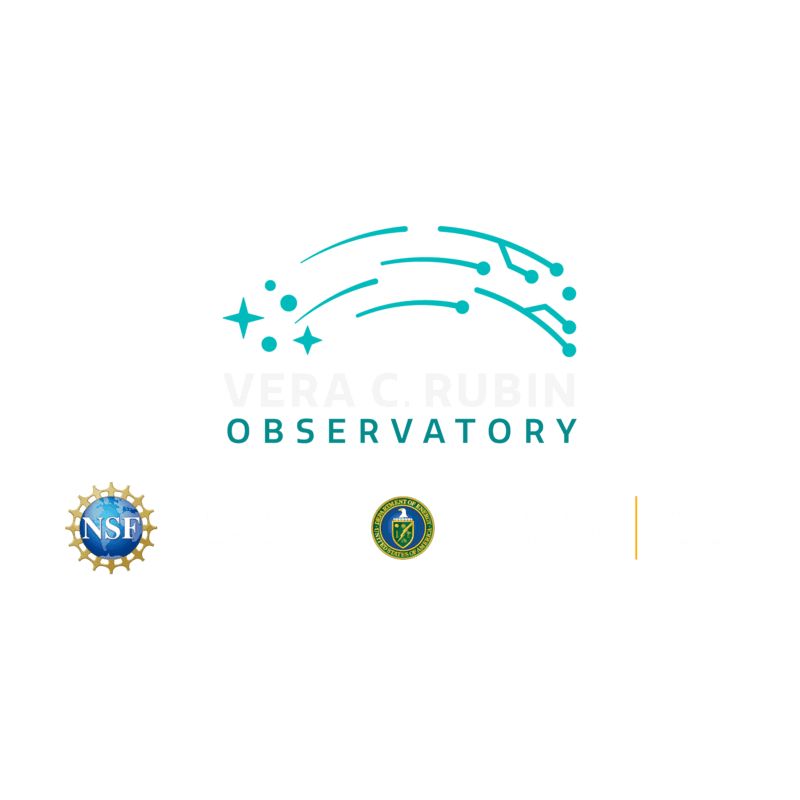
Want to see NSF–DOE Rubin Observatory's Cosmic Treasure Chest for yourself?
Explore using Rubin's Skyviewer! There are billions of pixels to explore, and you might be the the first to lay eyes on a small, distant galaxy! #RubinFirstLook #CaptureTheCosmos
skyviewer.app
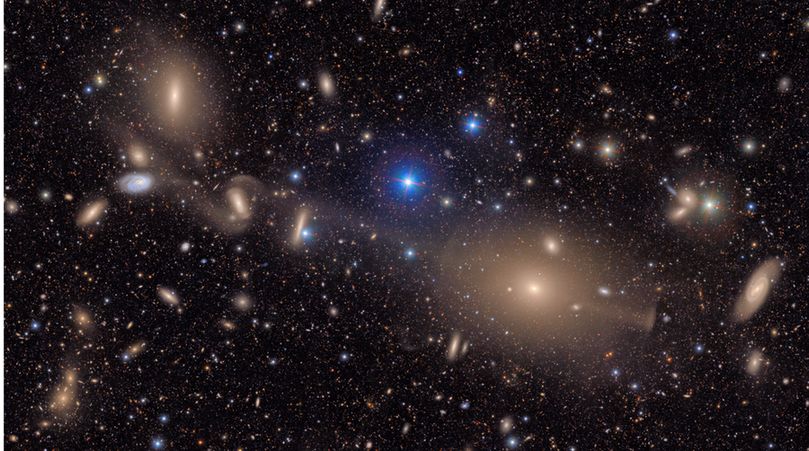
A sprawling, textured field of galaxies scattered across the deep black of space. It is filled with the delicate smudges and glowing cores of galaxies of many shapes, sizes and colors, as well as the bright multi-colored points of stars. The image focuses on a collection of interacting galaxies connected by delicate streams of stars. At top center lies a large elliptical galaxy that is dense and smooth, like a polished stone glowing with golden light. Like delicate spider silk or stretched taffy, these stellar bridges link the large elliptical to the few larger galaxies beneath, evidence of past collisions. All throughout the image, thousands of galaxies gather in clusters or are spread throughout, like glittering gems strewn on a table. Some are sharp-edged and spiral, like coiled ribbons; others round and diffuse, like polished pebbles. Still others are just smudges of various colors against the black of space. The background is peppered with pinpoint stars in reds, yellows, and blues, crisp against the velvet black.
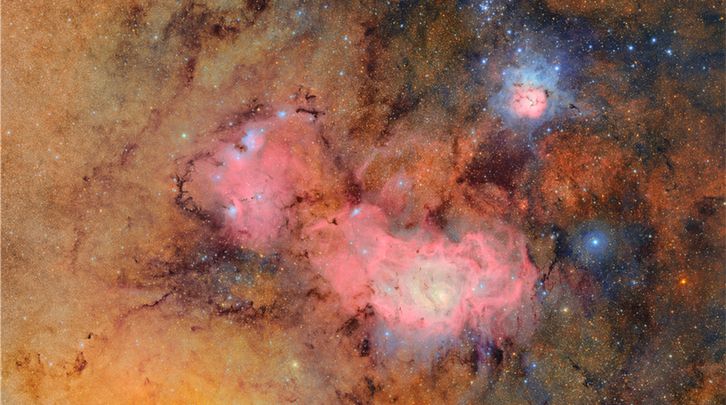
A cosmic tapestry of glowing tan and pink gas clouds with dark dust lanes. In the upper right, the Trifid Nebula resembles a small flower in space. Its soft, pinkish gas petals are surrounded by blue gas, and streaked with dark, finger-like veins of dust that divide it into three parts. It radiates a gentle, misty glow, diffuse and soft like the warmth of breath on a cold hand. To the lower left, the much larger Lagoon Nebula stretches wide like a churning sea of magenta gas, with bright blue, knotted clumps sprinkled throughout where new stars are born. Both nebulae are embedded in a soft tan backdrop of gas that is brighter on the left than on the right, etched with dark tendrils of dust and sprinkled with the pinpricks of millions of stars.
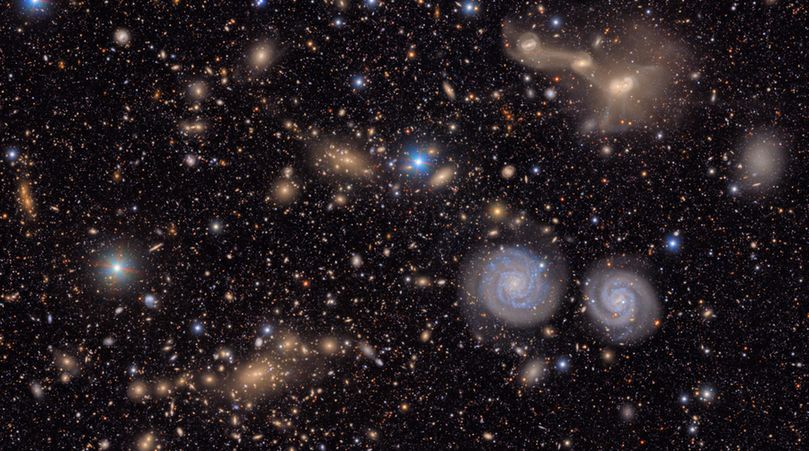
A sprawling, textured field of galaxies scattered across the deep black of space. It is filled with the delicate smudges and glowing cores of galaxies of many shapes, sizes and colors, as well as the bright multi-colored points of stars. To the lower left is a region filled with the hundreds of golden glittering gems of a distant galaxy cluster. In the foreground, below and right of center, two blue spiral galaxies look like eyes beneath the entangled mass of a triple galaxy merger in the upper right. A few bright blue points of foreground stars pierce the glittering tapestry. All throughout the image, thousands of galaxies gather in clusters or are spread throughout, like glittering gems strewn on a table. Some are sharp-edged and spiral, like coiled ribbons; others round and diffuse, like polished pebbles. Still others are just smudges of various colors against the black of space. The background is peppered with pinpoint stars in reds, yellows, and blues, crisp against the velvet black.
Introducing...your sneak peek at the cosmos captured by NSF–DOE Vera C. Rubin Observatory!
Can you guess these regions of sky?
This is just a small peek...join us at 11am US EDT for your full First Look at how Rubin will #CaptureTheCosmos! 🔭🧪
#RubinFirstLook
ls.st/rubin-first-look-livestream

NASA FY2026 budget request screenshot. 3.9076B for science, 523M for astrophysics, down substantially from 2024.
I think the budget request for NASA just went up, cutting NASA astrophysics to 34% (and NASA science to 53%) of FY2024 levels and zeroing STEM engagement. 🔭 www.nasa.gov/fy-2026-budg...
30.05.2025 20:26 — 👍 18 🔁 8 💬 2 📌 2
A screenshot of the number of people involved in NSF activities being reduced from 330,100 to 90,000.
TO BE PERFECTLY CLEAR, THE PROPOSED NSF BUDGET CUTS NEARLY A QUARTER OF A MILLION PEOPLE FROM NSF ACTIVITIES. FOR INSTANCE, JOBS.
30.05.2025 23:37 — 👍 660 🔁 283 💬 4 📌 11
Premium subscribers to my Bad Astronomy Newsletter can learn about the equinox today and see an *incredible* shot of a galaxy hiding amongst the interstellar fog.
badastronomy.beehiiv.com/p/happy-equi...

A butterfly of colored dots, showing galaxy positions trace out large-scale structure. Credit: Claire Lamman / DESI

A smaller butterfly of stars, overlaid on the galactic plane. Credit: Claire Lamman and Sergey Koposov / DESI
ALSO today, DESI has made all its DR1 data public! There's millions of spectra from both galaxies and Milky Way stars. Dig in! 🌌
20.03.2025 01:05 — 👍 54 🔁 6 💬 1 📌 3
Poster of two binary stars orbiting each other, it has elements that come from the merge of the two stars coming out, like Au,Ag,Th,Rh,Gd,Pu,Pd,Eu art deco style, minimalistic #Sciart
"The team predicts that the two neutron stars will spiral slowly toward each other in a cosmic dance, ultimately colliding in a kilonova explosion." Inspired by @skuthunur.bsky.social article & thanks to @astro-jje.bsky.social for patiently answering all my silly binary star questions! #Sciart
23.02.2025 12:55 — 👍 206 🔁 57 💬 12 📌 7Coolcoolcool
24.02.2025 20:40 — 👍 1 🔁 0 💬 0 📌 0
This galaxy was imaged for proposal 11643, A Timeline for Early-Type Galaxy Formation: Mapping the Evolution of Star Formation, Globular Clusters, Dust, and Black Holes The rest of the objects in the image are anonymous. Red: 11643 WFC3 UVIS F625W Green: Pseudo Blue: 11643 WFC3 UVIS F438W North is NOT up. It is 25.6° clockwise from up.
SDSSJ225506.80+005839.9 - From Judy Schmidt (geckzilla.bsky.social) - https://flic.kr/p/jPWBd4
23.02.2025 11:00 — 👍 38 🔁 3 💬 3 📌 0Last 4+ quarters for the Celtics here in Philadelphia...
Boston 154
Philadelphia 94
These are research grants awarded through evaluation of their merits by scientific peers, in which the investigators are carrying out important, ground-breaking work. They're being targeted because, as required by NSF guidelines, they include some investment in benefits for the broader community.
12.02.2025 16:08 — 👍 908 🔁 210 💬 17 📌 6They found a way to litter from space
06.02.2025 00:16 — 👍 2838 🔁 903 💬 67 📌 28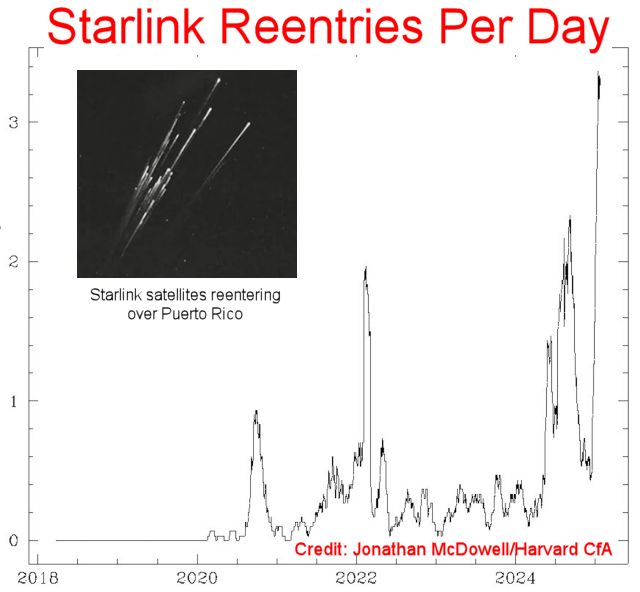
Something else to thank EM for.
"The sustained rate of daily reentries is unprecedented," says Jonathan McDowell, an astronomer at the Harvard Center for Astrophysics who tracks satellites. "They are retiring and incinerating about 4 or 5 Starlinks every day."
@planet4589.bsky.social
#astronomy

A magnificent barred spiral galaxy with arms tightly wound into near continuous circles. This was colorized using PanSTARRS z/i/g survey data. I processed the center somewhat heavily to make the lines of dust more apparent. Establishing HST's Low Redshift Archive of Interacting Systems Luminosity: ACS/WFC F606W Red: PanSTARRS z Green: PanSTARRS i Blue: PanSTARRS g North is 45.34° counter-clockwise from up.
AM 0619-271 - From Judy Schmidt (geckzilla.bsky.social) - https://flic.kr/p/2eGbVt7
04.02.2025 05:00 — 👍 37 🔁 6 💬 0 📌 1
Report: Universe To End Next Friday
Report: Universe To End Next Friday
theonion.com/report-...

I had processed this previously, but lately I looked at it and felt that I completely messed up the color balance, leaning too far blue. I decided I also didn't like the blur that I had used to smooth out the noise. I wish all the tidal tails were easier to see, but the imaging really isn't that deep. Regardless, it's still a beautiful dataset, and I am quite fond of this compact group of galaxies. In the lower left is that typical WFPC2 missing L-shaped chunk of data. I filled it in with some noise and matched it in brightness to make it less distracting. Just know that empty space is not actually empty; it's missing data. I also took the opportunity to check if there was any Chandra data available, and there was. The combined Chandra+Hubble version is here: flic.kr/p/JvapTn Red: WFPC2 F814W Green: WFPC2 F555W Blue: WFPC2 F439W+F336W North is NOT up. It is 10.15° counter-clockwise from up.
Seyfert's Sextet - From Judy Schmidt (geckzilla.bsky.social) - https://flic.kr/p/Jva2fX
01.02.2025 07:00 — 👍 100 🔁 10 💬 1 📌 0!["I'm not a scientist" is a phrase that has been often used by American politicians, primarily Republicans,[1][2][3][4][5][6][7] when asked about a scientific subject, such as global warming,[1] or the age of the Earth.](https://cdn.bsky.app/img/feed_thumbnail/plain/did:plc:cyyd366g3hrxp5rynixm2mm3/bafkreifun36abhamu7uhha7pjq5egxkq2wdt2bfhfewq6kdsex2vvwzxwe@jpeg)
"I'm not a scientist" is a phrase that has been often used by American politicians, primarily Republicans,[1][2][3][4][5][6][7] when asked about a scientific subject, such as global warming,[1] or the age of the Earth.
28.01.2025 22:24 — 👍 1832 🔁 294 💬 16 📌 6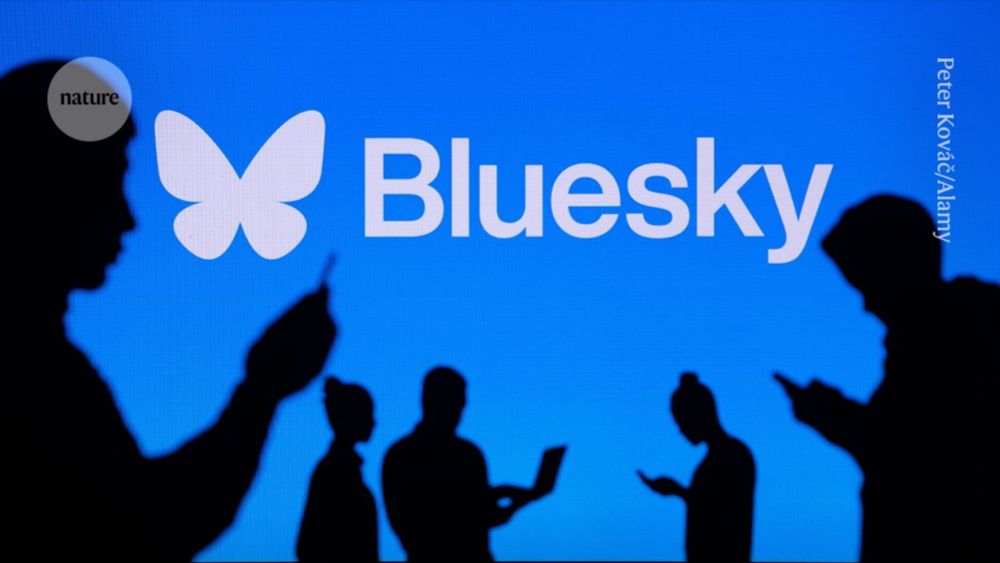
On the migration of the scientific community to Bluesky:
www.nature.com/articles/d41... 🧪
This is so sad
22.01.2025 20:45 — 👍 2426 🔁 485 💬 57 📌 15🙏
21.01.2025 02:53 — 👍 0 🔁 0 💬 0 📌 0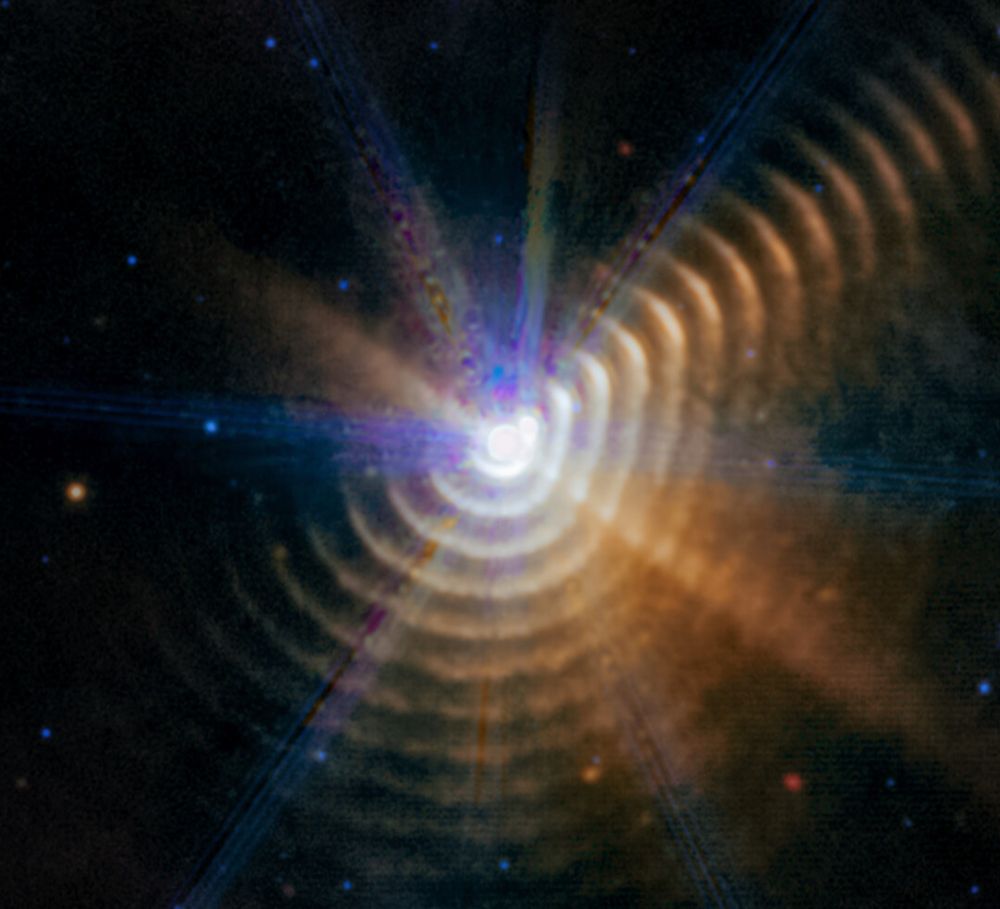
Hoo boy, I bet you could use a distraction today!
So how about an intense JWST image of a pair of colossal stars whizzing past each other and blasting out wave after wave of dusty shells, expanding away at a soul-freezing NINE MILLION KPH?!
badastronomy.beehiiv.com/p/two-coloss...
🧪🔭
 15.01.2025 01:00 — 👍 0 🔁 0 💬 0 📌 0
15.01.2025 01:00 — 👍 0 🔁 0 💬 0 📌 0